Electrical Engineering
Nano therapeutics heat up
Smart, stretchable pads open up a new approach for thermotherapy.
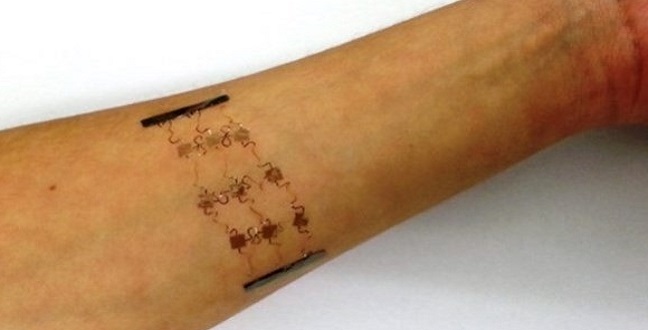
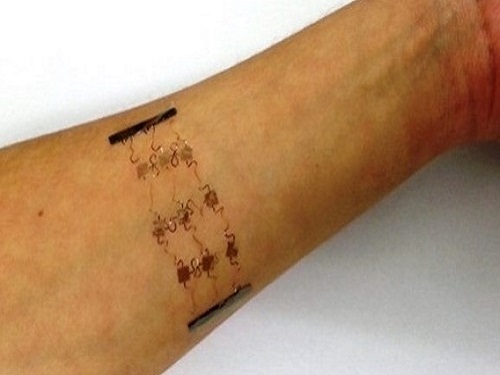
The stretchable copper circuits can be fabricated on a flexible plastic lightweight patch that can be easily attached to the skin.
Reproduced with permission from Ref 1 © 2015 Wiley-VCH Verlag.
Wearable technology offers better control and flexibility of thermotherapeutic approaches and now a stretchable electronic patch that can be wirelessly controlled has been developed by a research team from KAUST 1.
Managing pain is an intrinsic part of many therapeutic processes and an important aspect of healthcare. The benefit of heat in mitigating the effects of pain is well known. “A digital interactive, stretchable and reusable thermal patch can deliver controlled heat to various parts of the human body,” explains Muhammad Hussain from KAUST’s Computer, Electrical and Mathematical Science and Engineering Division.
Currently available heat-generating patches rely on chemical reactions. A better route to create therapeutic patches however is to use electrical heating — which can be applied controllably and repeatedly — and so help to better manage how the heat is applied to the skin. However, the problem for such patches is that the heating element — electrical conductors such as copper — are too rigid to conform to the movements of skin.
Straight electrical wires can break easily when stretched so the KAUST researchers have designed electrical circuits whose curved, spring-like shapes are far more flexible (see image). “Copper thin films cannot be stretched in their natural state, but due to the lateral spring structures we designed, we achieved record stretchability of about 800 percent from a metal,” comments Hussain.
The stretchable copper circuits can be fabricated on a flexible plastic substrate. These patches are light weight and can be easily attached to the skin. Depending on the voltage applied, temperatures in the patch can reach up to 80 degrees. The electrical circuits also allow the integration of further functionality. For example, the researchers added an antenna to provide wireless control via a smartphone over the patch temperature.
As well as being attached to the skin, these patches could have applications inside the human body, comments Hussain. “We envision the same device with further optimization can be used as implantable thermotherapy for cancerous cell destruction.” Other stretchable electronic devices have already been demonstrated for internal applications, and exposing cancer cells to heat is a known therapeutic approach.
Skin patches have come a long way from their first, basic uses. Thanks to the development of stretchable electronics, complex therapeutic as well as diagnostic uses may soon be feasible, concludes Hussain. “We are working with world renowned pharmaceutical companies on the commercialization of the patch.”
References
- Hussain, A.M., Lizardo, E.B., Torres Sevilla, G.A., Nassar, J.M. & Hussain, M.M. Ultrastretchable and flexible copper interconnect-based smart patch for adaptive thermotherapy. Advanced Healthcare Materials 4, 665–673 (2015).| article
You might also like
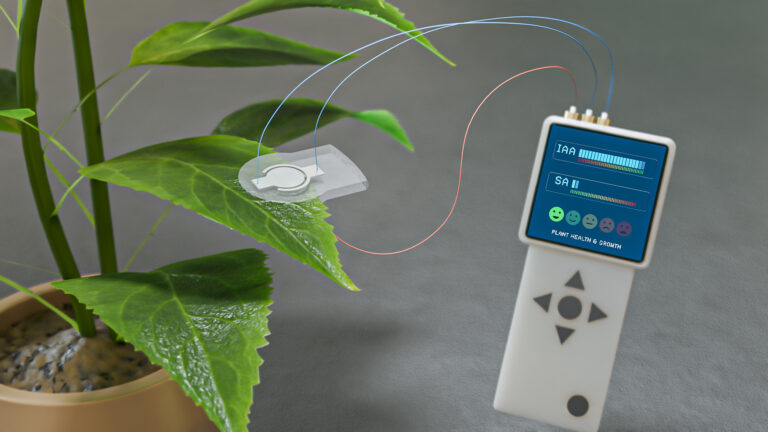
Bioengineering
Sensing stress to keep plants safe

Computer Science
Sweat-sniffing sensor could make workouts smarter

Electrical Engineering
New tech detects dehydration by touching a screen
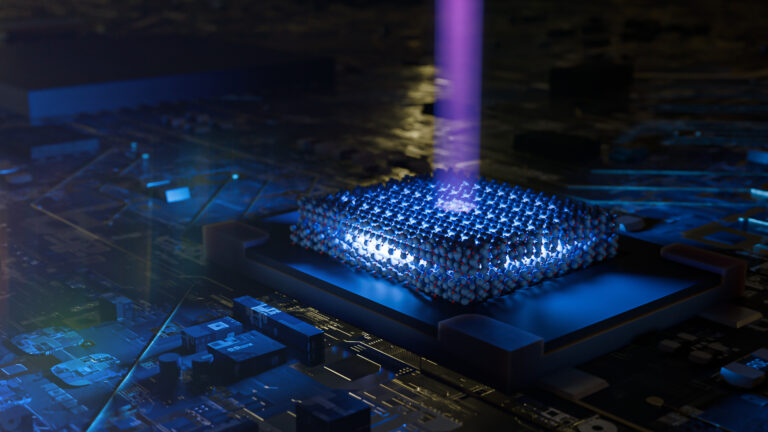
Electrical Engineering
A new interface for efficient electronics

Electrical Engineering
Artificial neurons enable neuromorphic computing with light

Electrical Engineering
Narrow-linewidth lasers bring low-noise answer
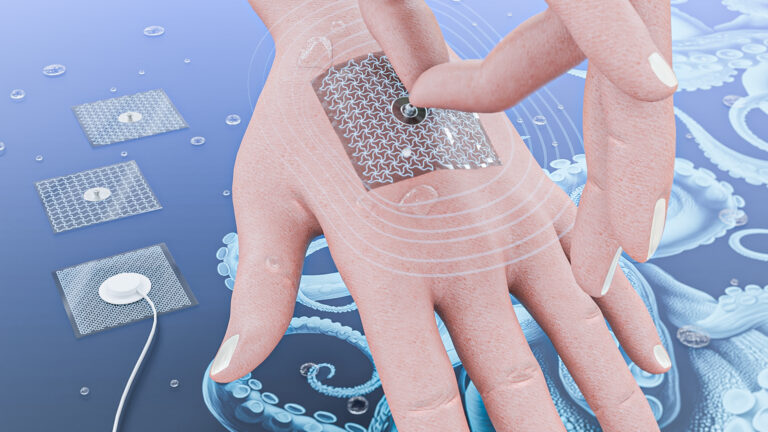
Electrical Engineering
Octopus suckers inspire sticky medical patch
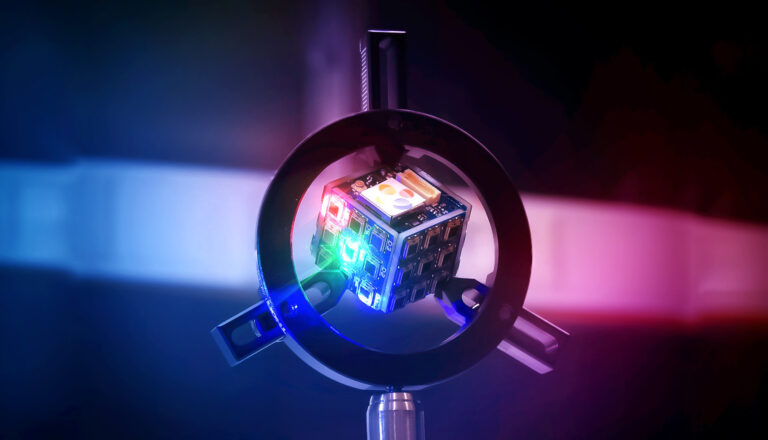
Electrical Engineering



